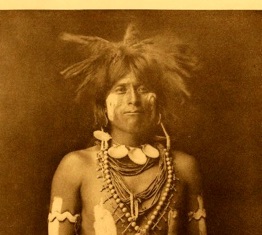
Study:


A selection of portraits of Shinnecock Family Flock Padovana (aka Padua aka Polish) Roosters and Hens, and their feathers made by Ulf Skogsbergh with Hope Sandrow open air studio spacetime.
A context is the flock members ancestral heritage
to feathered Avian Dinosaurs. And as inspiration for Oceanic, South American, African and Native American Regalia including Shinnecock Nation.
(2006, March 28) “When my path crossed with this big white bird (Shinnecock, r) on hills where Native Americans once roamed freely, “ said Sandrow,”his feathered crest reminded me of Edward S. Curtis’s portraits “The North American Indian”; and, Regalia exhibited at Shinnecock Indian Nation Annual Pow Wow.”
(r) Hope Sandrow September 30 3:53pm Shinnecock with Susanna; Two of seventeen portraits of Shinnecock Family Flock commissioned (2009) by Agnes Gund .... view more in the series The Sky is Falling Open Air Studio Shinnecock Hills spacetime 2009 Albumen Prints 20” x 16” ; The North American Indian Portfolio 12 plate no. 430 1900; Regalia, Eastern Woodland headdress Shinnecock Nation John Boyd 2013 photo by Sandrow
(below) Portrait of Tolbunt Flight feather 2013 photo by Sandrow/ Skogsbergh size variable Pigment Print on Cotton Rag
copyright © 2021 Hope Sandrow all rights reserved
Feathers are considered by evolutionary biologists and paleontologists to be the one of the most miraculous expressions of evolution. As recently unearthed fossils (China) have dated birds and feathered dinosaurs to 160 million years ago. (Humans 2 million years back to Homo Erectus). These were selected from amongst thousands molted by Shinnecock Family Flock that Sandrow gathered daily (since March 2006).
The Feather’s surface repels water; its complex structure manages temperature in ways that scientists have yet to duplicate. (Note 1) The most wondrous theory relating to flight is that of "Quantum Entanglement" that Einstein termed "spooky action at a distance". (Note 2)
Airfoils such as the flight feather develop lift by forming a pressure differential with less pressure on top of the airfoil. The air particles moving over the airfoil has to travel a longer distance over the top and strives to stay connected with air particle split to travel below the airfoil. The particles traveling faster over the top generate most of the lifting force.The aerodynamic properties of a flight feather is an expression of yet unexplained physics, but it exists as surely as anther unexplained force of nature "gravity", which without the feather would have kept birds and all of us tied to the ground.
The patterning and coloration integral to communicating the birds genetic quality and health to prospective mates and rivals. Ensuring that the best qualities of the species survive into future generations (Charles Darwin theory of "Natural Selection", On the Origin of Species,1859). In subsequent studies Darwin wrote at length about the Padovana as an example illustrating his theory of "Sexual Selection". Their beauty also evident to humans, despite many avian species including the Padovana threatened with extinction, Feathers are still used as fashion decoration by people to attract attention.
Naturally adorned roosters strut amidst the landscape of open air studio Shinnecock Hills.
Note 1: Soft power: how the feather trade took flight
Note 2: Scientists unveil the first-ever image of quantum entanglement







